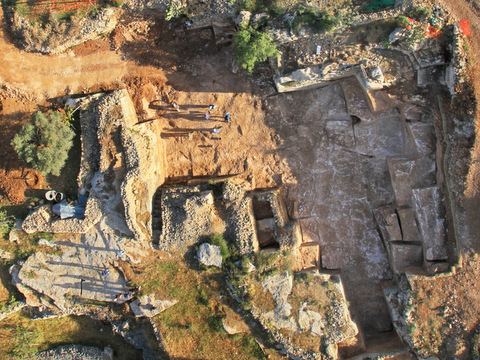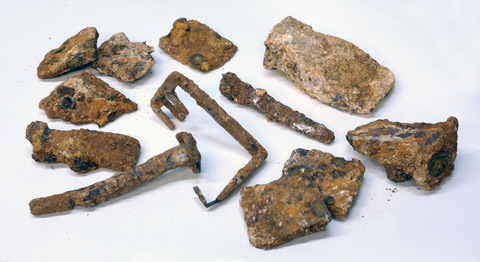Jerusalem's Ancient 'City of Quarries' Reveals City-Building Rocks

A huge quarry, along with tools and a key, used by workers some 2,000 years ago have been discovered during an excavation in Jerusalem prior to the paving of a highway, the Israel Antiquities Authorities (IAA) announced.
The first-century quarry, which fits into the Second Temple Period (538 B.C. to A.D. 70), would've held the huge stones used in the construction of the city's ancient buildings, the researchers noted.
Archaeologists also uncovered pick axes and wedges among other artifacts at the site in the modern-day Ramat Shlomo Quarter, a neighborhood in northern East Jerusalem.
"The quarrying phenomenon created a spectacular sight of bedrock columns and steps and craters of sorts that were the result of the rock-cuttings," Irina Zilberbod, IAA excavation director, said in a statement. "What remained are rock masses in various stages of quarrying, and there were those that were found in a preliminary stage of rock-cutting prior to detachment." [In Photos: Amazing Ruins of the Ancient World]

Some of the huge stones would've reached about 6.5 feet (2 meters) in length and weighed tens if not hundreds of tons, the researchers said.
In total, the team uncovered an area of around 11,000 square feet (1,000 square meters) where the ancient quarry would've existed. The quarry connects with other previously identified quarries, all of which seem to be situated in Jerusalem's so-called "city of quarries" dating to the Second Temple period. In a dig reported in 2007 and completed before the construction of an elementary school in the Ramat Shlomo Quarter, IAA scientists had uncovered another Second Temple quarry. The stones from this quarry, some of which reached 26 feet (8 m) in length, would have been used by King Herod for his Temple at the Temple Mount and other monumental buildings, according to the IAA and news reports. (Temple Mount, also called Noble Sanctuary by Muslims, is a religious site in the Holy Land of Jerusalem.)
As for what made this area in Jerusalem such a draw for rocks, the researchers suggest the Meleke rock formation there may be part of the reason. Meleke rock, they say, is easily quarried and hardens immediately after being cut and shaped (or hewn). Also, this area would've been elevated above the city of Jerusalem during the Second Temple period, possibly making transport of the enormous stones easier since the trek would've been downhill.
Sign up for the Live Science daily newsletter now
Get the world’s most fascinating discoveries delivered straight to your inbox.
In fact, researchers discovered a first-century road adjacent to the quarry that may have been used for stone transport.
The scientists aren't certain how exactly the giant stones would've been moved along this road. They suspect oxen and wooden rollers would've done the trick, but some historical records note giant wood-lifting devices were around at the time and may have been used.
Follow Jeanna Bryner on Twitter and Google+. Follow us @livescience, Facebook & Google+. Original article on LiveScience.com.
Jeanna Bryner is managing editor of Scientific American. Previously she was editor in chief of Live Science and, prior to that, an editor at Scholastic's Science World magazine. Bryner has an English degree from Salisbury University, a master's degree in biogeochemistry and environmental sciences from the University of Maryland and a graduate science journalism degree from New York University. She has worked as a biologist in Florida, where she monitored wetlands and did field surveys for endangered species, including the gorgeous Florida Scrub Jay. She also received an ocean sciences journalism fellowship from the Woods Hole Oceanographic Institution. She is a firm believer that science is for everyone and that just about everything can be viewed through the lens of science.










